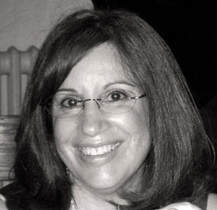
Lois, you are a prolific indie writer working in several fiction genres. You came to writing from a background as a literary agent. What make you decide to cross over the bridge from the publishing industry and start writing?
Actually, it was the other way around. The agency that represented me invited me to join them as an agent after learning that I had helped several friends get published by polishing their proposals. I began my agency career reading through the slush pile and offering editorial input to some of the agency’s other clients as well as writers they were considering representing. Eventually, I graduated to having my own list of clients. All the while, I continued with both my design career and writing my own books. I’m now semi-retired, concentrating only on writing more books.
Your Anastasia Pollack Crafting Mysteries series draws readers in for a number of reasons. One is the humor we find in your cozy mystery series. Anastasia has been described by Kirkus Reviews as “North Jersey’s more mature answer to Stephanie Plum.” We know Stephanie Plum books by Janet Evanovich are often very funny. Do you find humor difficult or easy to write? What sources do you draw on to make things funny for your readers?
No one was more surprised than I when I discovered I could write humor. I’m someone who has botched up the punch line of every joke I’ve ever attempted to tell—if I can even remember the joke in the first place! But it turns out when it’s just me and my computer, the humor flows through my fingertips onto the screen.
As with most of my plots and characters, the source for my humor comes from what I see and read in the news. My humor is more cerebral than pratfall or slapstick and sometimes leans towards sarcasm, but it’s never nasty. I believe being a Jersey Girl has molded much of my outlook on life. When you live in New Jersey, you experience irony on a daily basis—like my grandfather, in law enforcement in North Jersey, while his brother was a bootlegger in South Jersey.
I read your first Anastasia mystery, Assault with a Deadly Glue Gun. While I did laugh out loud while reading, I was struck also with how humor helped the protagonist Anastasia deal with significant trauma (a husband who managed to ruin the family finances before dying suddenly). Is humor a consistent way for your characters to deal with life’s challenges?
It is—for both my characters and me. I learned a long time ago that sometimes you can either laugh or cry, and you’ll feel much better if you choose to laugh. Laughing releases endorphins, and that makes us feel better. So I try to find the humor, both for my characters and myself, in as many situations as possible. Even when I was writing dark romantic suspense, I tried to inject a bit of humor into some of the dialogue and deep point of view to relieve the tension, make my characters more human, and give the reader a break from the darkness.
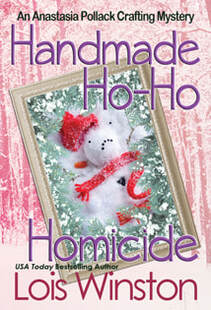
Each book contains several designs. Unlike other crafting cozies that feature an amateur sleuth who works in one particular craft, because Anastasia is a crafts editor, I decided my series would feature different crafts from book to book. The designs always have some connection to the plot. I choose crafts where I can write directions that don’t require patterns, which would be problematic for ebooks and paperbacks. Also, all of the crafts I feature are easy enough for even the most novice of crafters. I don’t want anyone to feel intimidated by the projects.
Assault With a Deadly Glue Gun features bridal crafts and crafts for a Fourth of July picnic or barbeque, including bridal tennis shoes, birdseed roses, recycled jeans placemats, clay pot candles, and a decoupaged wooden flag tray.
Mop dolls are featured prominently in Death By Killer Mop Doll, so I included a bunny mop doll project and a string doll angel ornament.
In Revenge of the Crafty Corpse the murder victim was a crafter who often worked with fabric yo-yos. Along with yo-yo instructions and stitching tips, there are directions for embellishing a sweater with yo-yos and making a yo-yo doll and four yo-yo Christmas ornaments.
Decoupage Can Be Deadly includes basic decoupage directions and tips along with instructions for Potichomanie decoupage, illuminated decoupage, embossed decoupage, and Repoussé decoupage.
A Stitch to Die For offers instructions for two knit and two crocheted baby blankets.
I include scrapbooking tips in Scrapbook of Murder, which centers around an old scrapbook the daughter of a murder victim discovers while she’s clearing out her mother’s attic.
In Drop Dead Ornaments Anastasia’s son and his classmates craft glass ball ornaments to sell at the town’s annual crafts show to raise money for the local food pantry. The book contains a variety of different glass ball ornament crafts.
Finally, in Handmade Ho-Ho Homicide, my newest release, I showcase a variety of Christmas crafts made by recycling greeting cards, including 3-D ornaments, gift bags, a triangular flag garland, a wreath, and a wall-hanging photo frame.

I didn’t have a blog until my agent sold the Anastasia series. My publisher wanted to know what I planned to do in the way of social media. I truly detest Facebook, but I bit the proverbial bullet and set up an account. Within five minutes I was bombarded with friend requests from creepy dudes in Third World nations. I immediately deleted the account and decided to create a blog instead.
Looking around at other author blogs, I realized most were about writing and geared toward fellow authors. I wanted to attract readers. So I set up the blog to be the online home of the magazine where Anastasia and her fellow editors work. I try to feature posts about topics you might find in any women’s magazine. So even when I have guest authors, which I do quite frequently, I ask them to write posts on topics that would appeal to a wide variety of readers. For instance, if I’m hosting an author who is a nurse in her day job and writes medical mysteries, I’ll ask her to write something health-related. If a book takes place in a real locale that could be a vacation destination, I’ll ask the author to write about the setting for her book. If an amateur sleuth runs a bakery or catering business, I’ll ask the author to supply a recipe.
Tell us about your new release, Handmade Ho-Ho Homicide (An Anastasia Pollack Crafting Mystery Book 8).
Two and a half weeks ago magazine crafts editor Anastasia Pollack arrived home to find Ira Pollack, her half-brother-in-law, had blinged out her home with enough Christmas lights to rival Rockefeller Center. Now he’s crammed her small yard with enormous cavorting inflatable characters. She and photojournalist boyfriend and possible spy Zack Barnes pack up the unwanted lawn decorations to return to Ira. They arrive to find his yard the scene of an over-the-top Christmas extravaganza. His neighbors are not happy with the animatronics, laser light show, and blaring music creating traffic jams on their normally quiet street. One of them expresses his displeasure with his fists before running off.
In the excitement, the deflated lawn ornaments are never returned to Ira. The next morning Anastasia once again heads to his house before work to drop them off. When she arrives, she discovers Ira’s attacker dead in Santa’s sleigh. Ira becomes the prime suspect in the man’s murder and begs Anastasia to help clear his name. But Anastasia has promised her sons she’ll keep her nose out of police business. What’s a reluctant amateur sleuth to do?
Buy Links:
Amazon
Kobo
Barnes & Noble
iTunes
What do you do for fun when you aren’t writing and publishing your books?
I love the theater. I’m lucky enough to live a short commute from Broadway and know the secret to scoring really cheap theater tickets to many productions ahead of time and without waiting in line for hours at the TKTS booth. So I go to as many shows on and off Broadway as possible. I would have loved a career on the Broadway stage, but I have a tin ear and two left feet—a fact reinforced when years ago my two-year-old said, “Mommy, please don’t sing. You’re hurting my ears!”
To learn more, go to Lois Winston’s website here: https://www.loiswinston.com/
and Anastasia Pollack’s blog here: www.anastasiapollack.blogspot.com
Link to my review of Lois’s first book, Assault with a Deadly Glue Gun, here: https://www.bookbub.com/reviews/2555461940
Extra: Anastasia interviewed Letty Valdez (my Letty Valdez Mysteries) here:
https://anastasiapollack.blogspot.com/2018/08/book-club-friday-interview-with-mystery.html





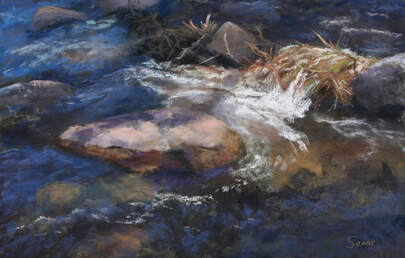
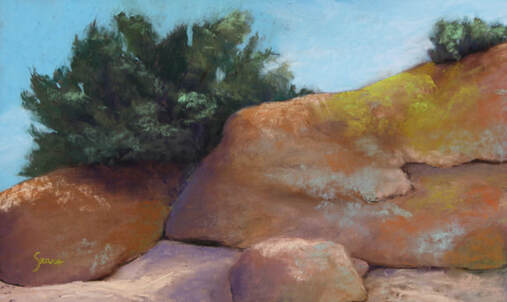



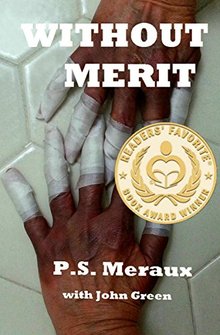
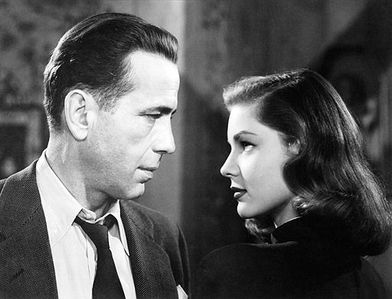
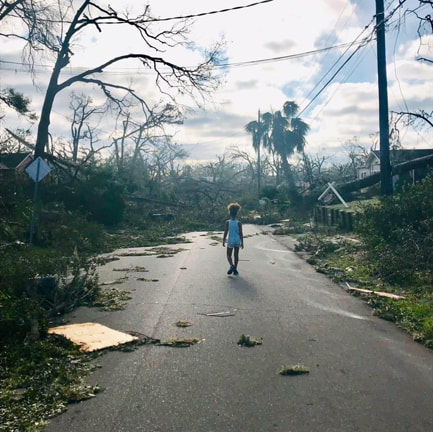
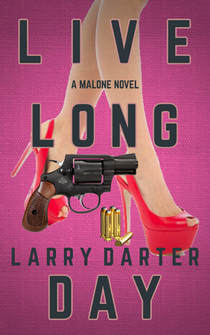
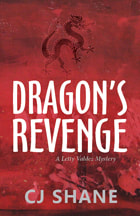
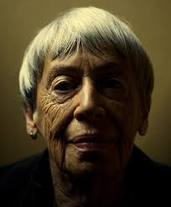
 RSS Feed
RSS Feed